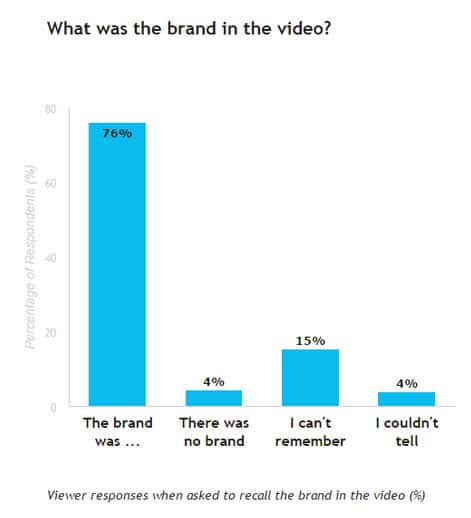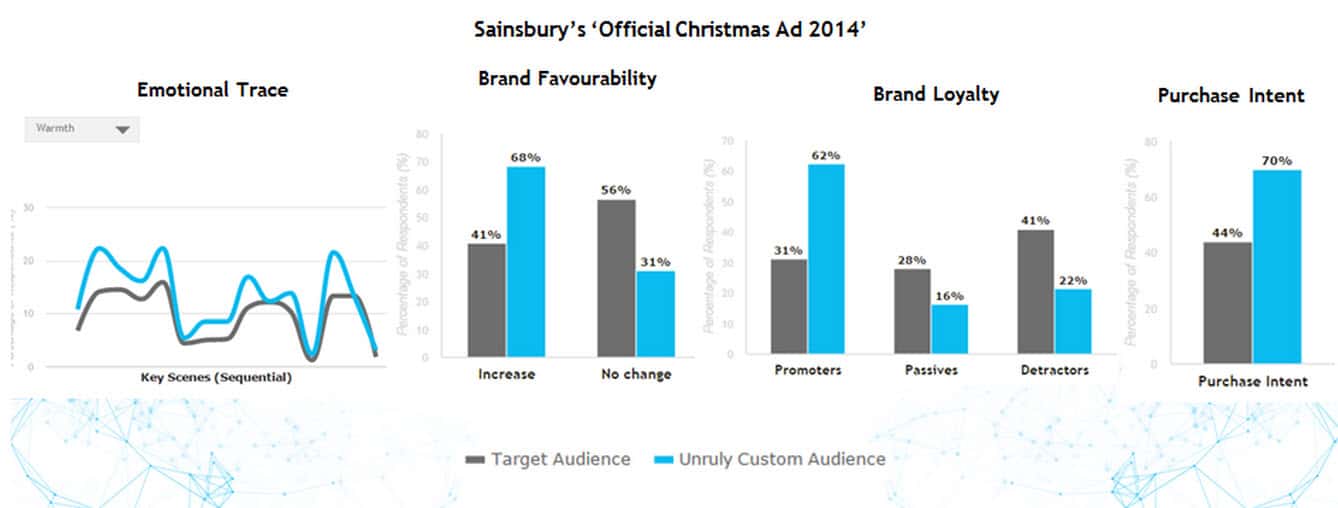The Really Early Guide On How To Create The Perfect Festive Ad (Part 4)
It’s Chriiiissstmasss! No, really. There may not be any mistletoe or wine on show right now, but brand managers are already busy plotting their festive ad campaigns.
But don’t worry, Unruly has been tracking the most shared Xmas ads since 2006 and, using data collected by our Unruly ShareRank algorithm and our Unruly Custom Audiences platform on some of the biggest hits of 2014, we have come up with some content and distribution tips on how to create the perfect Christmas campaign.
Unfortunately, we have so much to talk about we’ve had to split it into four parts. We’ve already brought you Part one, Part two and Part three of the series, so make sure you have read these before feasting your festive advertising eyes onto the final section, Part four.
So, sit back with some eggnog or mulled wine and enjoy!
Play 10: Don’t hide your brand
There’s no relationship between how much sharing a video attracts and the level of branding it has. Nor does overt branding make a video less emotionally impactful.
So when you consider that the average social video has one third of the branding of an average TV commercial, it’s a huge opportunity for marketers looking to make the most of the social web.
So don’t waste your budget pushing content out that no one knows you did. Or even worse, viewers think your competitors did, as one Super Bowl advertiser found out.
Chrysler created a beautiful spot, with high production values featuring the legendary Bob Dylan which evoked feelings of pride and nostalgia. However, only 7% of viewers realised the ad was for Chrysler, while 12% thought it was for the city of Detroit, and 4% thought it was for rival Ford.
Looking at the four Christmas ads we tested for John Lewis, Sainsbury’s, Marks & Spencer and Harvey Nichols, they all had above average brand recall. However, Harvey Nick’s “Could I Be Any Clearer?” scored the lowest, with 76% (chart below).

Four percent thought there was no brand at all, 15% could not remember, while others thought it was an ad for Royal Mail or ‘a card company of some sort’.
So could they have been any clearer? Yes, yes they could have been.
Play 11. Use UCA to find emotional bullseye among your target, boosting brand metrics
Why do emotions matter? Because not only will they deliver more earned media and drive online (and offline) word of mouth, as we mentioned in Play 1, but they also drive greater brand uplifts and purchase intent for your products and services.
But don’t just take my word for it. In a study by Pringle and Field, it states that “emotional campaigns outperform on almost every metric”.
So by targeting people who are more likely to feel the strongest possible reaction to your video content, you are guaranteeing more bang for your buck.
OK, admittedly, this is a shameless plug of one of our own products, but Unruly Custom Audiences does just that, allowing advertisers to target viewers who demonstrate an intense emotional response to a specific ad, leading to increases in earned media, brand recall and purchase intent, as you can see from the chart below.

To find out more about UCA, click here.
Play 12. Don’t waste your cash on celebs. Celebrate the Average Joes and Janes instead
The stars were certainly out last Christmas, with celebs including Lady Gaga, Tony Bennett, Ant and Dec, Romeo Beckham, Kristen Bell, Dax Shepard and even The Minions all appearing in festive ads.
However, how many do you think made into the top 10? Well, just two – The Minions, which finished first, and Romeo Beckham’s ad for Burberry, which was seventh overall.
In fact, a lot of the most popular ads featured just ordinary people, such as WestJet’s “Spirit Of Giving”, Air Canada’s “Gift of Home” and Tesco’s “Wigan Light Show”. Even the police force of a sleepy town in Massachusetts made it into the top 10.
It was the same in 2013, with just one celeb ad finishing in the top 10 – Grumpy Cat’s ad for Friskies.
The highest placed star-studded commercial was for M&S, which finished 11th overall. Just like 2014, 2013’s high-climbers celebrated the average Joe or Jane, such as WestJet’s “Christmas Miracle”, Sainsbury’s “Homecoming” and Tesco’s nostalgic commercial, “There’s Nothing Better Than Christmas”.
This is a trend that is not just associated with Christmas. Research we conducted on last year’s Super Bowl also found that star power had very little effect on sharing success, so advertisers should spend their budgets on getting the right content and distribution rather than on any lavish celebrity appearance fees.
Bonus Play: Embrace parodies and mash-ups
In recent years we have seen a lot of parodies and mash-ups of ads. John Lewis, in particular, has attracted a lot of spoofs and parodies, including “Bear and the Hare” meets Watership Down, a horror spoof of “The Journey” and a Geordie version and alternate ending to Monty the Penguin.
But brands shouldn’t worry about this. If your ads are being mashed up or parodied, don’t regard it as a mutilation, but as a sign that your one-hit-wonder is turning into something more: an Internet meme that will extent the viral peaks of the original campaign! As they say, imitation is the highest form of flattery.
In other words, it is precisely these campaigns’ susceptibility to spoof and satire that holds the key to their viral success.
[pardot-form id=”4616″ title=”Trending Content Sign Up”]
